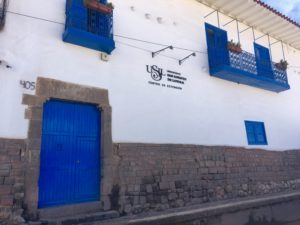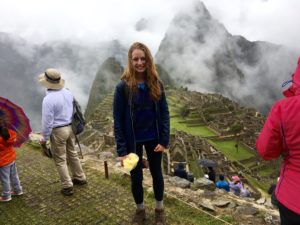My 6 weeks in Peru were equally rewarding and challenging. My program showed me how crucial immersion experiences are for the language acquisition process. I don’t think it is possible to really become fluent in a language without fully immersing yourself in the language and engaging with a different culture. I see a huge difference in my ability to speak and understand Spanish following my SLA experience, but I also now have a greater understanding of where I can improve. I think this is one of the best takeaways of my program: I not only know a lot more, but have a stronger appreciation of what I don’t know and how to proceed to fill these gaps.
I definitely achieved two of my language learning goals, but have to continue working towards the third. My 4-hour daily grammar class really improved my ability to utilize complex verb tenses while speaking (thank goodness). This rigorous course was one of the most beneficial components of my program and helped transform my speaking abilities. Consequently, it helped me achieve my second goal of conversing confidently with native speakers on various topics. I also have to thank Sandro for helping me accomplish this goal since he was always so willing to teach me new topics and vocabulary. I still need to work to improve my ability to utilize academic sources in Spanish, but I think that this is a skill I can acquire through my classes and my work as a research assistant. My SLA experience has allowed me to achieve numerous goals and has prepared me to pursue many others as I continue my academic career.

Universidad San Ignacio de Loyola: my school for the 6 weeks!
My biggest advice to people preparing to go abroad: make sure before you go that you are aware of which foods to avoid. Be careful what you are eating! It is so tempting to jump right in and try all the new foods, but I’d advise being cautious. Food and water-borne illnesses are a quick way to hinder your ability to enjoy your experience. It’s essential to strike a balance between being careful and pushing yourself outside your comfort zone. When I was in Peru, I was very diligent about avoiding drinking the water and eating certain foods, but still made sure to try the local delicacies. Despite my best efforts I still managed to get really sick for a large portion of my trip. What I learned through this experience was that it is important to try and avoid risky foods, but sometimes it really just comes down to luck. Many people in my program were sick for short periods throughout our trip and this is unfortunately a common occurrence when traveling abroad. Luckily, there are easy ways to treat these sicknesses and I wouldn’t let this possibility deter me from travelling again in the future. For anyone preparing to go abroad, I think it is necessary to identify any risks associated with your travel and prepare as best you can. But it is also important to recognize that sometimes trips don’t pan out exactly as we hope and that any struggles are just part of the adventure and not detrimental to the overall takeaway of the trip.
What I would recommend to people applying for the SLA grant is to choose a country that will push you outside your comfort zone; somewhere where you will experience a little bit of culture shock and learn to adapt. Initially, I was planning to apply for a grant to study in Spain, but was urged by one of my professors to explore other options and consider Peru, a country that was not previously on my radar. I am so grateful that she persuaded me to pursue a different path and guided me towards a more unfamiliar and daunting destination. This was some of the best advice I have received to date and I hope to encourage other people to consider this same recommendation in their SLA experience.
After I got back from Peru, I began volunteering regularly at a shelter for women and children. I was the only person working at the shelter who knew any Spanish, and after my trip to Peru I felt much more confident in my ability to speak in Spanish while interacting with the women. It was exciting to test out my Spanish in a setting outside of the classroom; something I hadn’t previously been able to do. This experience really showed me the importance of learning a language and its ability to break down communicative barriers and bring people together. It also reminded me that it is essential to engage in conversation as often as possible to maintain the improvements I made in Peru. Even just a few weeks after leaving Peru, I was already starting to feel a little rusty while speaking, but quickly made efforts to stop this regression. I am excited to spend next spring semester in Toledo, Spain to really solidify my grasp on the language. After only 6 weeks in Peru I see immeasurable progress in my Spanish and cannot imagine where I will be after a full semester abroad.
My SLA grant provided me with one of the most formative experiences of my academic career. It showed me the importance of exploring new places and experiencing new cultures. It helped me break outside of my comfort zone and grow personally. I learned to embrace the risks of independent travel and take any obstacles along the way in stride. I truly feel that this experience has helped me build a strong foundation for my future academic and professional goals. I am inexpressibly grateful for the SLA program and all of the people that made this experience possible for me. It was one of the most formative and gratifying experiences of my life.



 Gabi answering my questions, using any excuse to avoid her math homework
Gabi answering my questions, using any excuse to avoid her math homework The most amazing host family
The most amazing host family







